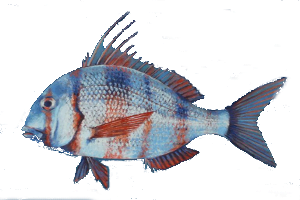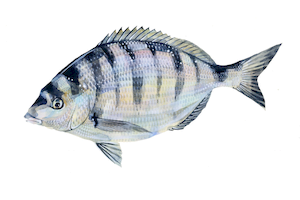DESCRIPTION:
Barn Swallow is the most widespread in the world.
This bird is always welcome when the groups arriving from Africa perch on wires. Spring is coming!
Adult male has black plumage with blue glossy feathers on the upperparts. On the upperwings, flight feathers are black. Tail is black with long steamers and it is deeply forked.
Underparts show broad blue-black collar on throat and upper breast. Lower breast, belly and vent are creamy-white to pure white. On the underwings, flight feathers are dark grey whereas coverts are creamy-white. Undertail coverts are creamy-white but rectrices are blackish. White patches on outer rectrices form white band across the tail.
On the head, forehead and chin are dark red. Crown and nape are blue-black. Lores and the area around the eye are black.
The thin, short bill is black, as eyes, short legs and feet.
Female is similar but she usually has shorter tail steamers and less distinct blue-black collar on throat.
Juvenile has short steamers. On the head, forehead and chin are buffy-white or even darker. Plumage is duller than in adults.
Barn Swallow has long and pointed wings and tail, and slender body.

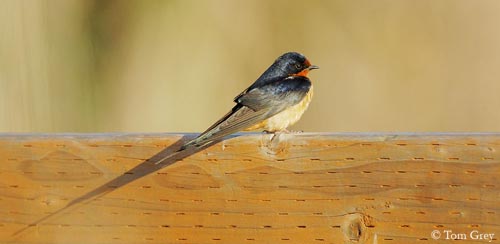
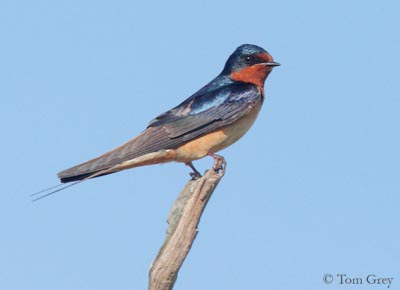
HABITAT:
Barn Swallow prefers open areas such as farmlands, grasslands, marshes and country with some trees. But this species is often seen in villages, towns and cities where we can see the birds flying into the streets, coming from the close country.
Barn Swallow may be seen from sea-level up to 1500-1800 metres of elevation, but it usually nests between 1000 and 1500 metres in mountainous areas.
This bird avoids dense forests and high mountains. It is dependent on suitable buildings, houses and monuments for nesting.
RANGE:
Barn Swallow has wide range, but it is absent from deserts and northernmost parts of continents.
This species breeds in the Northern Hemisphere. In some parts of the range such as Caucasus and North America, it can be seen up to 2500-3000 metres of elevation.
Barn Swallow migrates southwards in winter to the tropical regions. This bird is a long-distance migrant.
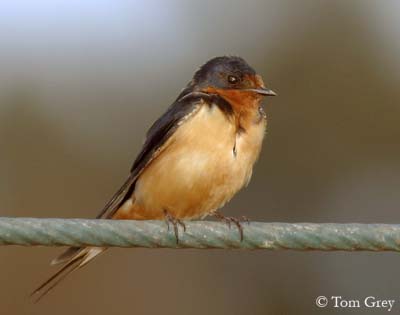
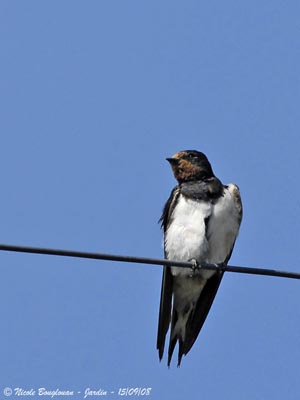
BEHAVIOUR:
Barn Swallow feeds essentially on insects caught on the wing. It takes various insects’ species such as Diptera, Lepidoptera, Coleoptera and Hymenoptera. Chicks are primarily fed with Diptera.
They find large quantities of insects above pools, ponds, lagoons, estuaries and lakes where we can see numerous Barn Swallows flying low from the water, raising and descending very easily.
Barn Swallow also may take insects on the water surface, only touching it with the steamers’ tips. It also may sometimes feed on flying ants on the ground during summer.
Barn Swallow performs some courtship displays in April, a few times after arriving on breeding areas. The male performs aerial displays by flycatching and flying around the perched female. This behaviour could be precopulatory and it is very short. The male fans the tail, in order to display the white patches of the outer rectrices. Legs are hanging and throat’s feathers are fluffed while it is flycatching close to the female.
Barn Swallow is full migratory. All populations migrate southwards for wintering in tropical regions. During these long migrations, great numbers of birds die, due to strong winds in Saharan regions, and also to pesticides spilled by planes above the roosting areas.
They migrate in large flocks and always return to their natal territory for breeding. Some times before to travel southwards, they gather on wires above street and roadsides.
FLIGHT:
Barn Swallow is an aerial feeder. It performs fast and agile flight, thanks to the long tail which gives it great manoeuvrability when the bird flies near water or ground. Flight is direct.
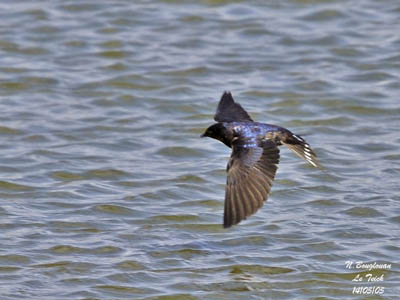
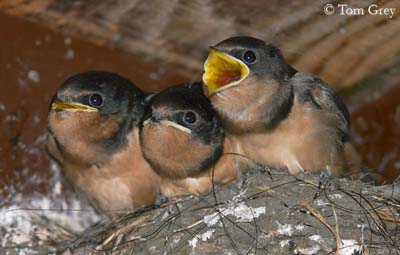
REPRODUCTION:
Barn Swallow often nests on ledges in buildings, monuments and cliff faces, sometimes in mews or other rural constructions even near humans.
The nest is cup-shaped and made with mud and dry grasses. The birds collect the mud on the ground, in river banks, close to pools, lakes, estuaries… The nest is open at top and may be more or less opened.
Both sexes build the nest, bringing small mud-balls and adding them little by little, one close to each other on regular raw and then, starting another raw above the previous in the same way. Dry grasses are often added to the mud, but more or less, depending on each pair.
Female lays 4-5 white eggs speckled dark. Incubation lasts about two weeks by female alone. When the female leaves the nest for feeding, the male may incubate during 15 minutes. If the female dies, the nest is abandoned.
At hatching, chicks are covered with fairly long grey down. They are fed by both adults with insects. At 15 days of age, their heads are visible above the nest’s rim with largely open bills.
They are able to fly between 20 and 24 days after hatching.
During the first days, the young return to the nest at night for sleeping. By day, they sit on exposed spot and wait to be fed. They are able to feed themselves very soon and to fly as well as their parents.
This species produces two or three broods per year.
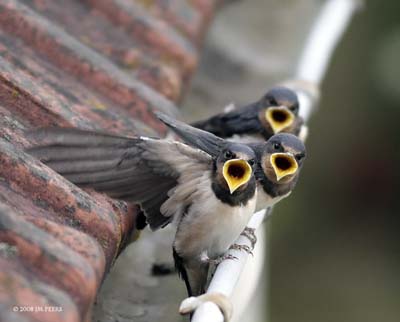
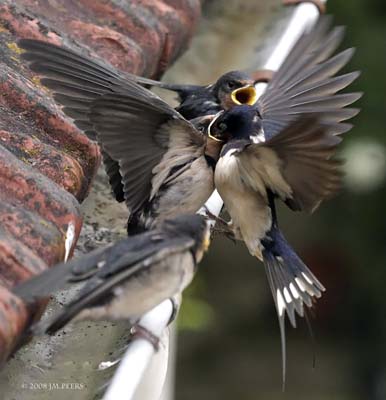
DIET:
Barn Swallow feeds on insects taken on the wing, including various species, and also some butterflies, dragonflies and damselflies.
PROTECTION / THREATS / STATUS:
Barn Swallow suffered declines some years ago, but they benefit from deforestation giving them more open areas and man-made structures for nesting. According to the range, some populations may be vulnerable to changes in the habitat.
Populations are relatively stable at this moment, in spite of some declines.
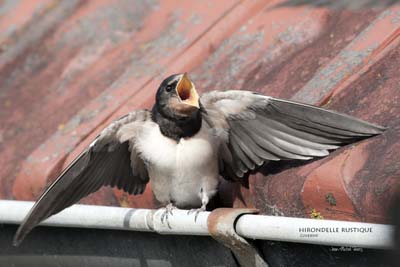
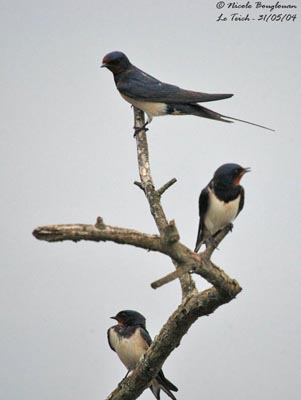
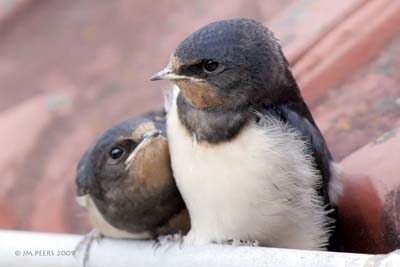
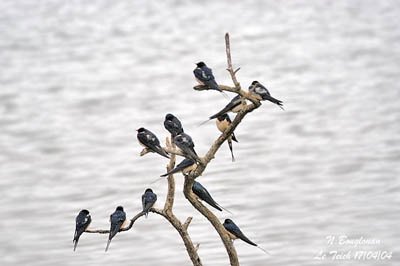
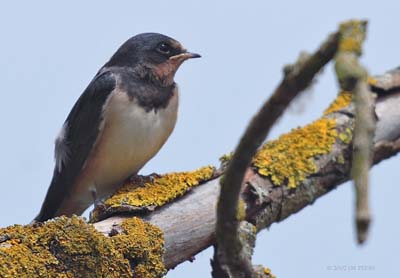
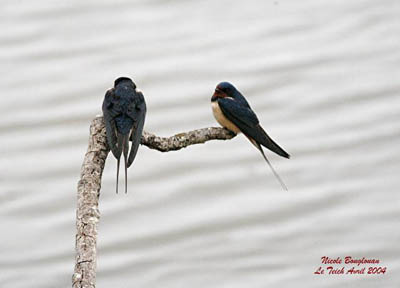
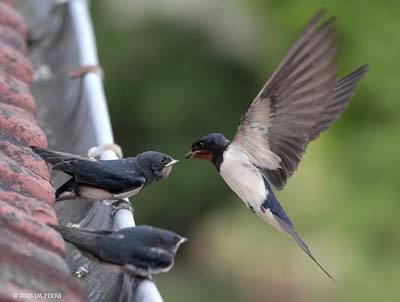
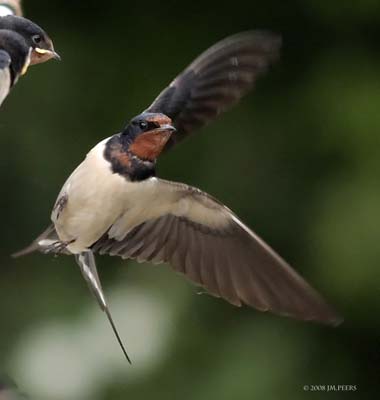
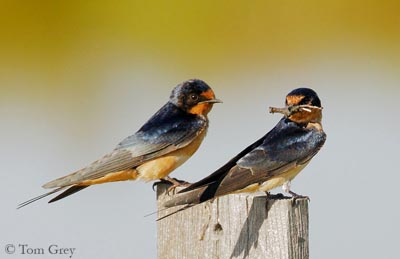
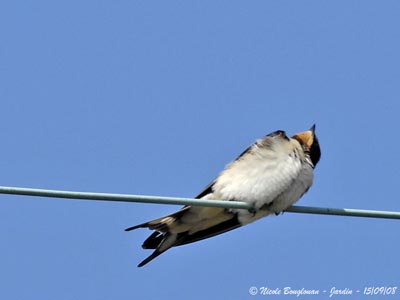
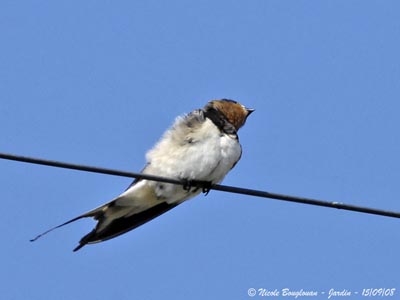
Sources :
THE HANDBOOK OF BIRD IDENTIFICATION FOR EUROPE AND THE WESTERN PALEARCTIC by Mark Beaman, Steve Madge – C.Helm – ISBN: 0713639601
THE COMPLETE BOOK OF BRITISH BIRDS – Written by “Royal Society for the Protection of Birds” experts – Préface de Magnus Magnusson – Michael Cady- Rob Hume Editors – ISBN: 0749509112
L’ENCYCLOPEDIE MONDIALE DES OISEAUX – Dr Christopher M. Perrins – BORDAS – ISBN: 2040185607





